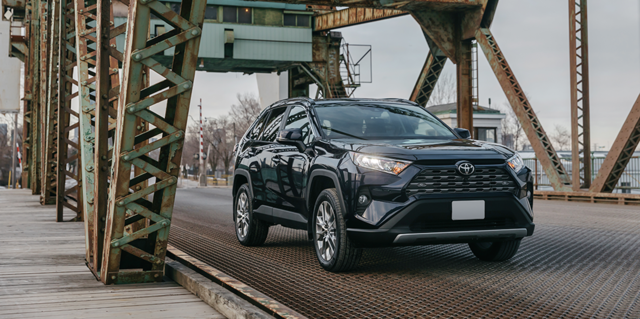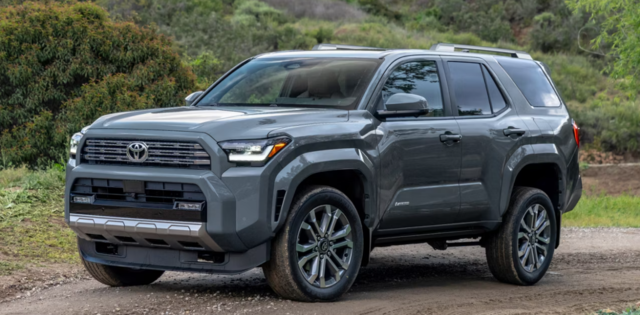Today, Toyota offers a lineup of crossovers that’s bolstered by a lineup of SUV models, too.
This gives shoppers more choice, but can also lead to confusion around the naming. So, what is the difference between a crossover and an SUV? Crossovers are built on a car-based chassis, structure and driveline whereas, the SUV is built more like a truck.
In many circles, the terms are used interchangeably, especially among taller-riding vehicles with flat roofs and (often) with AWD traction. There’s no generally accepted set of rules that cover all vehicles.
There are, however, some guidelines that mostly centre on the way the vehicle is built.
The Crossover
The Crossover Utility Vehicle (CUV) is one of the most sought out vehicles by Canadian shoppers. Typically called the ‘CUV’ or ‘crossover’, it delivers a collection of in-demand attributes, including flexibility, car-like mileage and manners, an elevated ride height, and often the added traction of All-Wheel Drive (AWD).
The Crossover has SUV Roots
The crossover is a relatively new innovation and, before its existence, the Sport Utility Vehicle (SUV) was a popular choice for active and growing families. The SUV gave many Canadians their first taste of the attributes of the CUV and it was a common choice for those looking for generous and flexible storage, enhanced traction and higher levels of space and capability than a conventional sedan.
The Switch to the Crossover
In the early years, SUVs tended to be big, unexciting to drive and, for some, too big to maneuver and park easily. Rising fuel prices also left many shoppers after a more fuel-efficient alternative. Simply, shoppers wanted space, traction, flexibility, and added ride height, but without the heft and thirst of an SUV.
Enter the crossover. The revolutionary vehicle blends traction, ride height and capability of a larger and heavier SUV, with the more athletic ride, handling, performance and efficiency of a small car.
The result was a new type of utility vehicle with traction and capability to spare, but in a smaller, easier to use and far more fuel-efficient package. It turns out that our hunch was right: Strong demand for the RAV4 continued to grow, and the model is still a strong seller today — some 25 years and five generations later.
The Comparison:
Under the Skin: The Crossover
Using a ‘uni-body’ construction, the crossover’s skeleton and skin are combined into a single, seamless assembly. By combining the body and structure as one, the vehicle can be made lighter, more spacious, more flexible and more car-like in terms of ride and handling.
Virtually every car built in the past several decades (and all crossover models) use uni-body construction. In a crossover, it works just like it does in a car: The body supports the vehicle’s weight, the load and stresses of the suspension, chassis and driveline, and forces imparted on the vehicle by the road or trail beneath.
For the crossover, uni-body construction allows automakers to create large and capable vehicles that also achieve excellent fuel mileage.
That’s partially thanks to what’s under the hood, too. Since crossovers are relatively light compared to SUVs, and don’t often see severe working conditions, they use engines, transmissions and driveline components selected carefully to deliver a blend of power and efficiency.
In fact, numerous Toyota crossovers like the RAV4 and Highlander are also available with proven fuel-saving hybrid engines, just like Toyota’s hybrid cars.
Further, AWD is commonly held as a defining crossover attribute, though that’s not always the case. Some of Toyota’s crossover models, including the sporty C-HR, are not available with AWD. Others, including the RAV4 and Highlander, offer AWD optionally.
Some models, such as the new RAV4, offer a drive-mode selector for driver-activated modes that may boost traction in specific challenging conditions, though typically there’s nothing required of the driver.
Under the Skin: The SUV
So, what makes an SUV different from a crossover? It all comes down to what’s under the skin.
An SUV is not built like a car. Instead of a uni-body construction, SUVs use a ‘body-on-frame’ design, which sees the body, driveline and chassis all attached separately to a common frame that is usually derived from a pickup truck.
The truck-based body-on-frame construction of an SUV generally results in a vehicle that’s heavier and stronger, but less roomy on board given its overall size.
But, in exchange for those compromises, there’s an important benefit for the shopper who uses their vehicle hard: toughness. With a stronger and tougher structure, an SUV can tow heavier loads, tackle more challenging off-road driving and stand up better to frequent use in severe conditions.
The SUV driveline is typically truck-based, too — using a larger and more powerful pickup truck engine that’s better suited to regular towing and hauling activities.
Most SUV models use a multi-mode 4x4 system, too. Unlike AWD, the 4x4 system lets drivers select between 2-wheel and 4-wheel drive for even the roughest drive. Unlike most crossovers, many SUVs even offer low-range gearing, which can help drivers drive easily through tough terrain.
Which One is for You?
Deciding between a crossover and an SUV is a matter of carefully considering your needs and lifestyle against the type of vehicle in question.
Those after comfort, fuel economy and maneuverability may find a crossover to be the ideal choice. Simply, this is because a crossover is more like a car than an SUV is.
Those after pickup-like toughness and performance, added confidence during frequent towing and hauling, or those who frequently use their vehicle in severe conditions may find the brawnier SUV is a better choice. This is because an SUV is more like a truck than a crossover is.
So, are you after a Highlander, or a Sequoia? A RAV4 or a 4Runner? Or maybe, a more flexible alternative to a small car, such as the C-HR?





